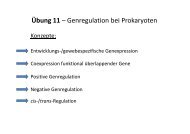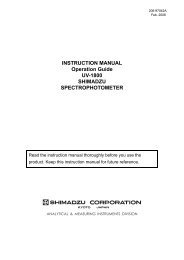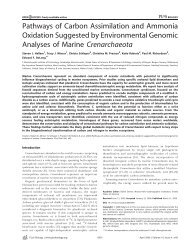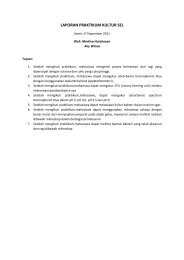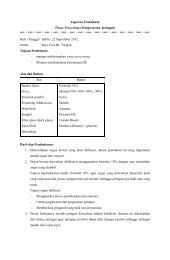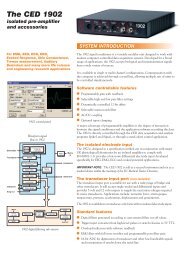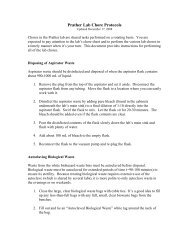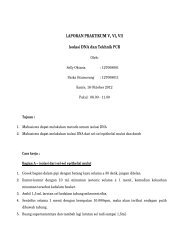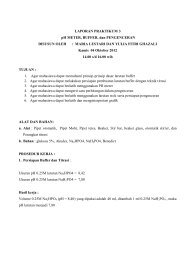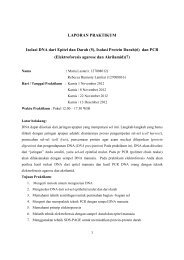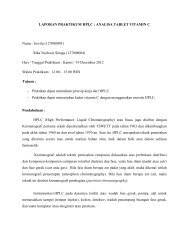ABI Prism® 7900HT Sequence Detection System ... - OpenWetWare
ABI Prism® 7900HT Sequence Detection System ... - OpenWetWare
ABI Prism® 7900HT Sequence Detection System ... - OpenWetWare
You also want an ePaper? Increase the reach of your titles
YUMPU automatically turns print PDFs into web optimized ePapers that Google loves.
Design Tips for Quantitative PCR Assays<br />
Selecting an<br />
Amplicon Site for<br />
Gene Expression<br />
Assays<br />
Selecting and<br />
Preparing Standards<br />
for Absolute<br />
Quantification<br />
C-6 Designing TaqMan Assays<br />
Selecting a good amplicon site ensures amplification of the target mRNA without<br />
co-amplifying the genomic sequence, pseudogenes, and related genes.<br />
Applied Biosystems recommends the following guidelines when selecting an amplicon<br />
site for quantification assays:<br />
♦ Primers and probes must be designed following the “Assay Development<br />
Guidelines” on page C-2.<br />
♦ The amplicon should span one or more introns to avoid amplification of the target<br />
gene in genomic DNA.<br />
♦ The primer pair has to be specific to the target gene and does not amplify<br />
pseudogenes or other related genes.<br />
♦ Test amplicons and select those that have the highest signal-to-noise ratio (such<br />
as those yielding low CTs with cDNA and no amplification with no template control<br />
or genomic DNA).<br />
♦ If no good sequence is found, it may be necessary to examine the sequence and<br />
redesign the amplicon or simply screen for more sites.<br />
If the gene you are studying does not have introns, then you cannot design an<br />
amplicon that will amplify the mRNA sequence without amplifying the genomic<br />
sequence. In this case, it may be necessary to run RT minus controls.<br />
To ensure accurate results, the standards used for absolute quantification must be<br />
carefully engineered, validated, and quantified before use. Consider the following<br />
critical points for the proper use of absolute standard curves:<br />
♦ The DNA or RNA used must be a single, pure species. For example, plasmid DNA<br />
prepared from E. coli often is contaminated with RNA, which increases the A260 measurement and inflates the copy number determined for the plasmid.<br />
♦ In general, DNA cannot be used as a standard for absolute quantification of RNA<br />
because there is no control for the efficiency of the reverse transcription step.<br />
♦ Absolute quantities of the standard must be known by some independent means.<br />
Plasmid DNA or in vitro transcribed RNA are commonly used to prepare absolute<br />
standards. Concentration is measured by A260 and converted to the number of<br />
copies using the molecular weight of the DNA or RNA.<br />
♦ Consider the stability of the diluted standards, especially for RNA. Divide diluted<br />
standards into small aliquots, store at -80 °C, and thaw only once before use. An<br />
example of the effort required to generate trustworthy standards is provided by<br />
Collins et al. (Anal. Biochem. 226:120-129, 1995), who reported on the steps they<br />
used in developing an absolute RNA standard for viral quantification.<br />
♦ Pipetting must be accurate because the standards must be diluted over several<br />
orders of magnitude. Plasmid DNA or in vitro transcribed RNA must be<br />
concentrated in order to measure an accurate A 260 value. The concentrated DNA<br />
or RNA must then be diluted 10 6 –10 12 -fold to be at a concentration similar to the<br />
target in biological samples.



